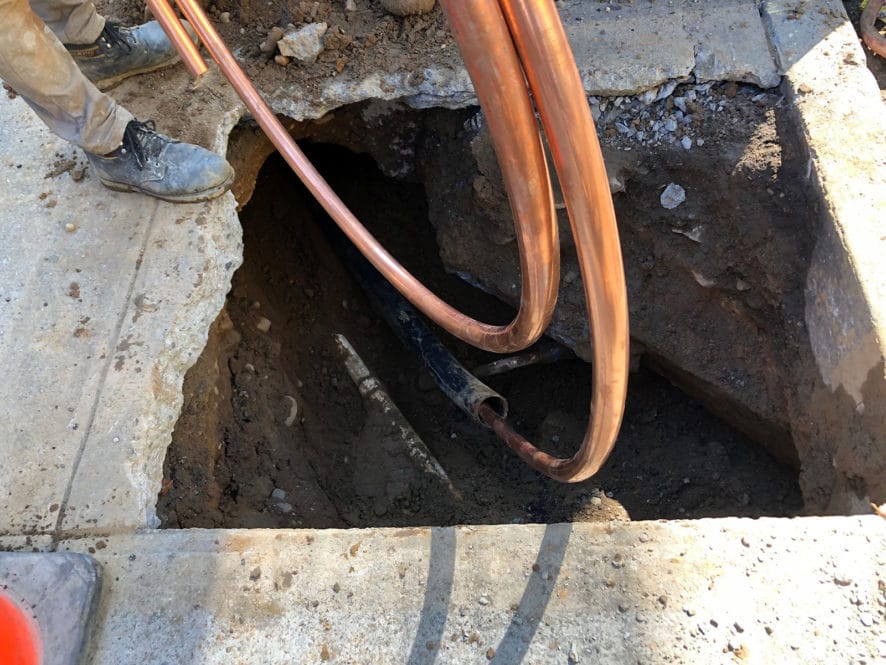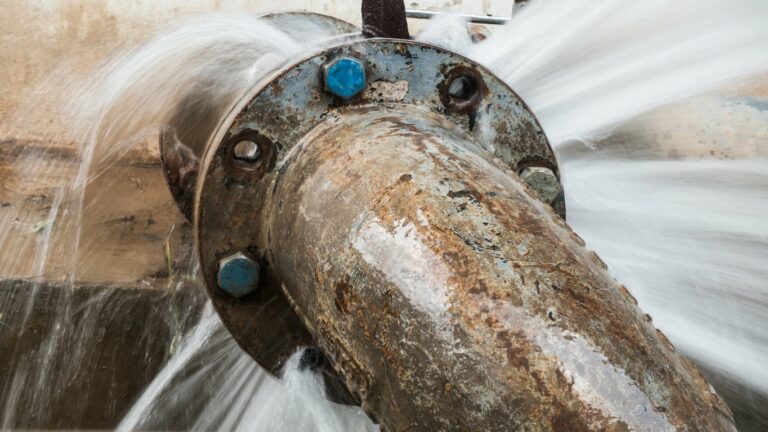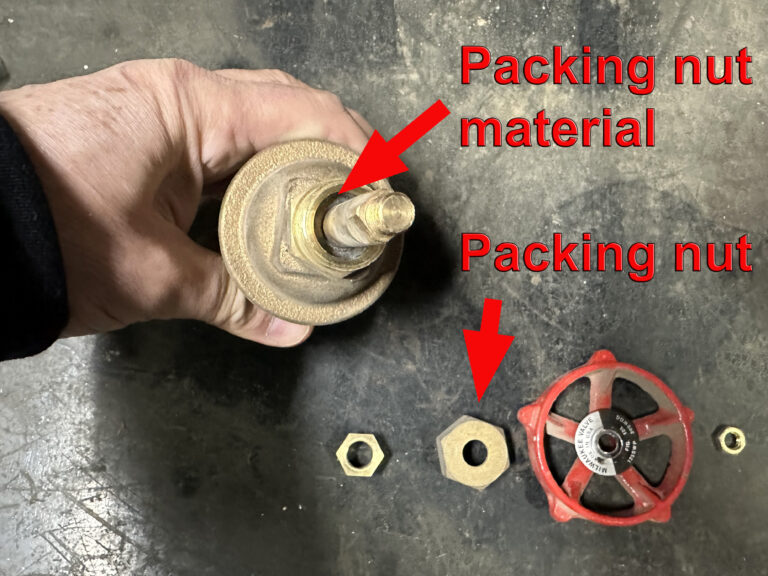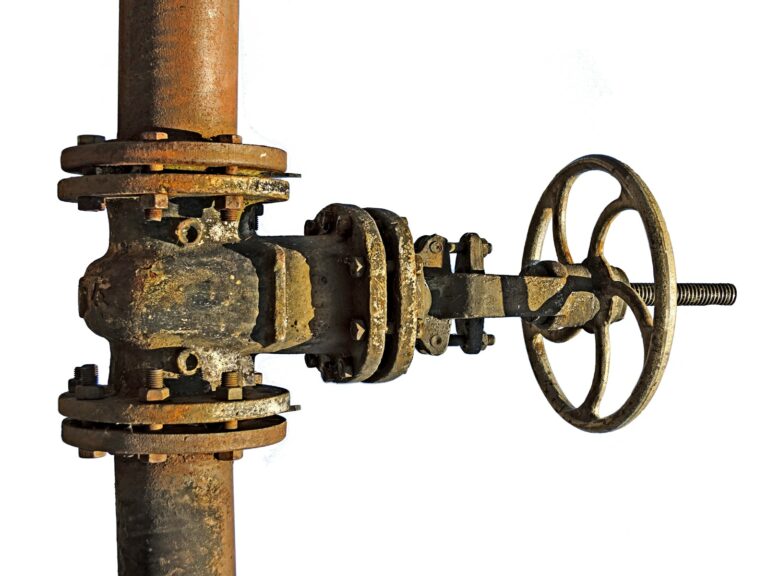Subsurface water works in the area of NYC present challenges even on seemingly routine jobs. NYC has an aged infrastructure, many buried obstructions, all in a congested metropolitan area. Therefore, safety and expertise are a daily requirement on each job site. Then there are those water works installations that truly present special challenges. Balkan recently encountered one such installation where Paul R. Balkan’s expertise proved vitally important.
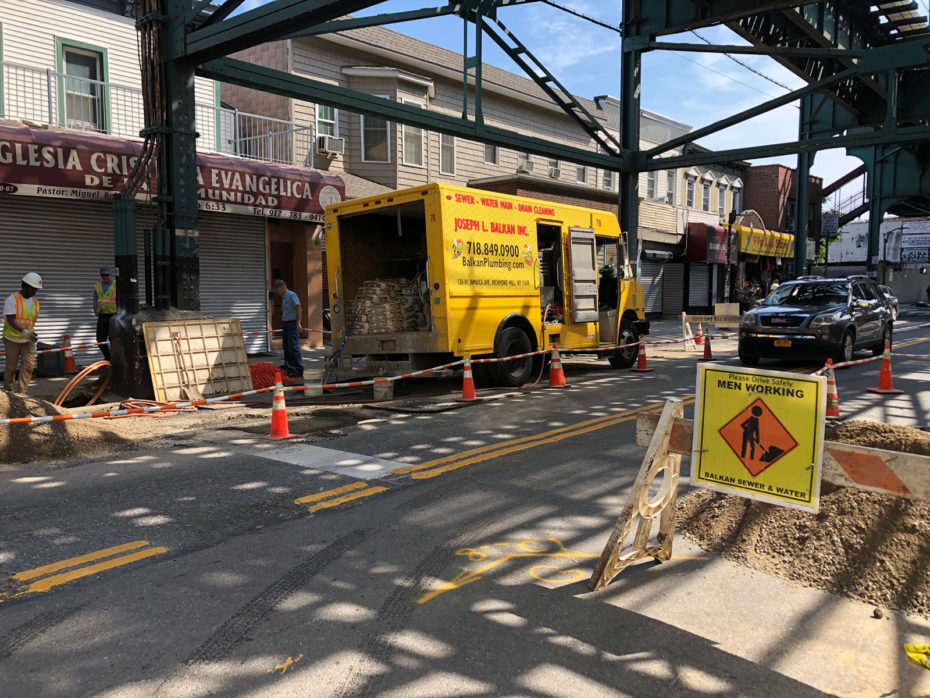
A Case Study: Subsurface Water Works on Jamaica Avenue
Jamaica Avenue in the Borough of Queens is a heavily trafficked roadway. Much of Jamaica Avenue still has the elevated train tracks overhead. Unfortunately for many property owners, those elevated train tracks also lead to an electrolysis condition on their copper water service lines. Electrolysis is when stray underground electric current attacks copper tubing, using it as a conduit. Electric current running through copper water tubing can destroy a line in a matter of months. This of course causes severe leaks, and associated damge. That was just the case for a property owner needing subsurface water works on Jamaica Avenue. This is an all too common condition around Lefferts Boulevard, and on Jamaica Avenue in Queens.
A Long-Lasting solution for an electrolysis condition

The only sure-fire way to protect copper water tubing from stray underground electric current is to install it through a plastic tubing, or pvc pipe. Each of the joints must be carefully sealed, and any exposed copper must be wrapped using specialty tape. Even the tiniest piece of exposed copper will fail in a short period of time. That is why this type of subsurface water works installation must be carefully overseen.
On this job location various underground obstacles presented them selves. These included utility manhole vaults, train trestles, and other buried utility lines. That meant that a variety of plastic materials had to be utilized to cover the copper water tubing properly and completely. Besides pvc pipe, flexible plastic tubing of various types was used, along with couplings, and specialty insulating tape.
Water Works with an Iron-Clad Guarantee
Because copper water tubing is not meant to be a conductor of electricity, damage from electrolysis is typically excluded from the terms of a guarantee from any and all water main contractors. Part of “The Balkan Difference” is that when an electrolysis condition is known, Balkan provides an all-inclusive guarantee, and provides a quality installation that backs that guarantee up. Paul R. Balkan ensured that quality installation by personally overseeing the job, and providing expert instructions.

About Paul R. Balkan NYC Licensed Master Plumber
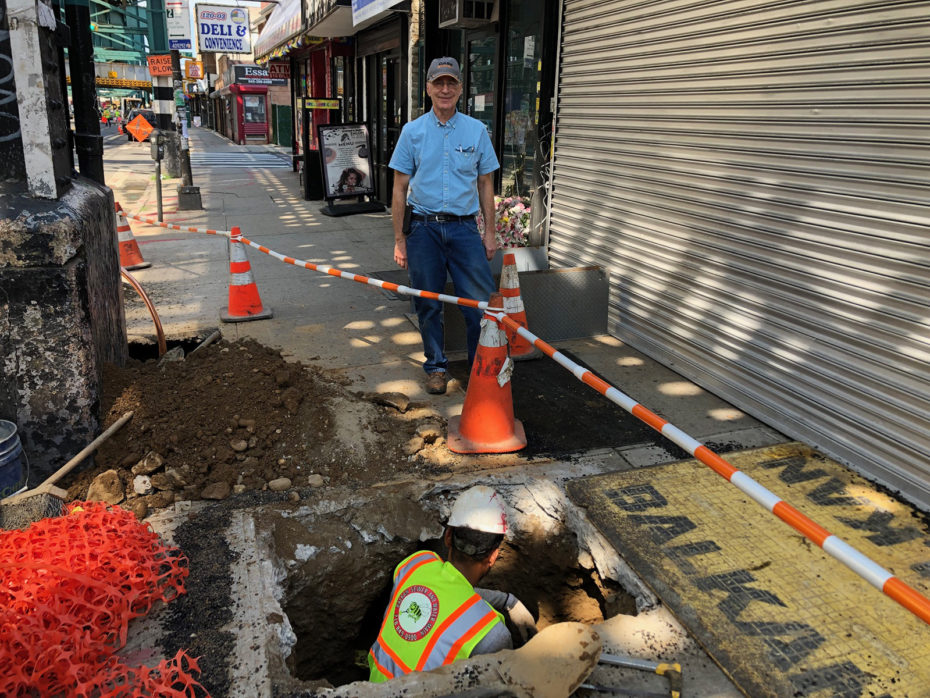
Paul R. Balkan is the President of Balkan Sewer And Water Main Service. He has been devoted to his chosen trade for virtually his entire adult life. Paul has well over 40 years of hand-on experience. When it comes to NYC subsurface water works, his knowledge and commitment to quality installations are unmatched. Simply put, Paul will not tolerate sub-standard installations, or work done against code requirements. He takes his responsibility to his client and his craft seriously. In addition, Paul is frequently a go-to source for other industry professionals, and city officials as well.
Jamaica Avenue and the Elevated Train Tracks
The elevated train tracks running through Woodhaven and Jamaica in Queens have been a fixture since 1917. The elevated trains replaced the previous form a public transportation. At first service was provided by a single-track horse drawn trolley. The end of the line at that time was the horse’s stable, located on 78th Street and Jamaica Avenue. Public transportation was then upgraded to a double-tracked trolley powered by steam engines.
As the neighborhood’s population grew, the inevitability of a public train system became a reality. Cost concerns eliminated the idea of a subway. But many quality of life concerns existed about an elevated train line. Regardless, after a heated battle the construction was begun around 1916, then completed in 1917.


